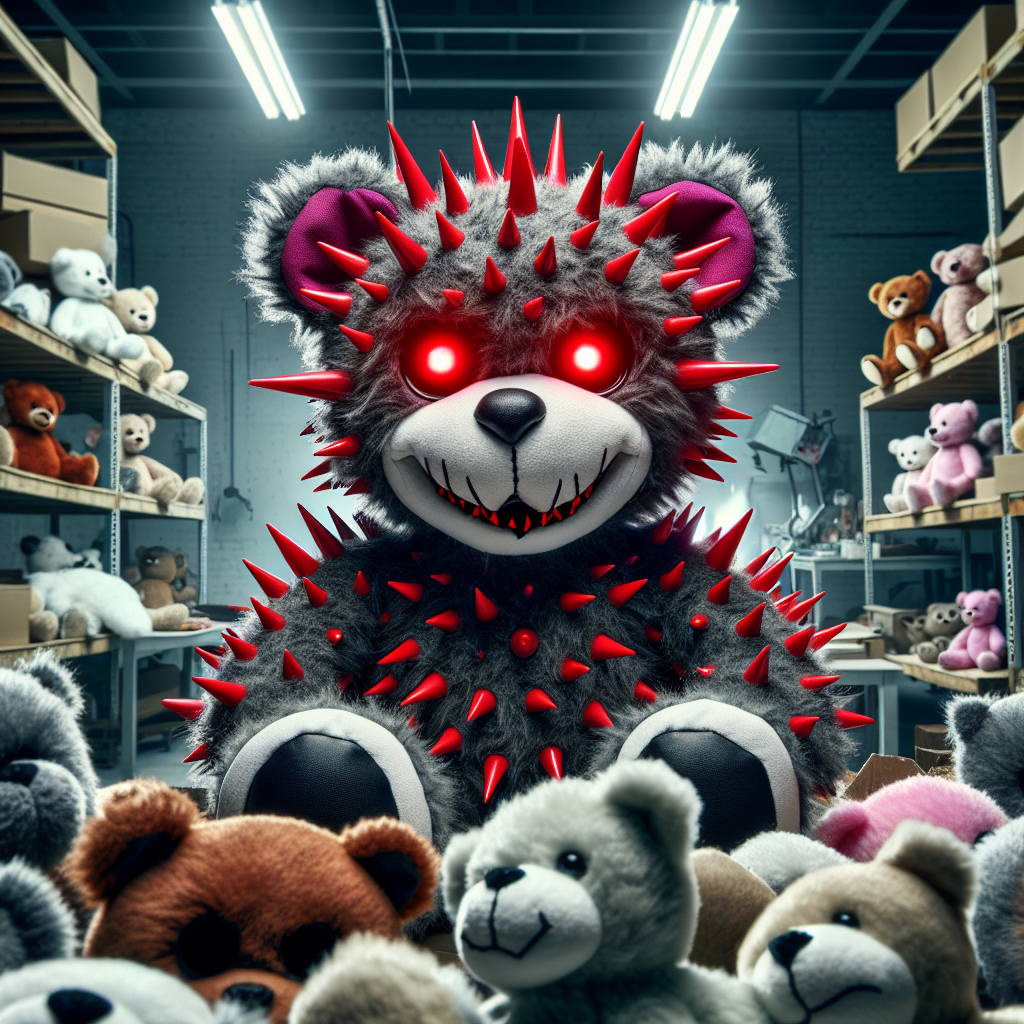-
Table of Contents
- AI-Generated Satanic Teddy Bear Images Mislead TikTok Users from Build-A-Bear
- The Emergence of Misleading AI Content on Social Media
- Case Study: Satanic Teddy Bears on TikTok
- Impact on Build-A-Bear and Brand Misrepresentation
- Technological and Ethical Considerations
- Preventive Measures and Future Outlook
- Conclusion: Navigating the Complexities of AI in Digital Media
AI-Generated Satanic Teddy Bear Images Mislead TikTok Users from Build-A-Bear

In recent times, the rapid advancement of artificial intelligence (AI) has led to its application in various fields, including digital media creation. However, this technology also poses unique challenges and ethical questions, particularly when it comes to the generation of misleading or harmful content. A striking example of this issue has emerged on TikTok, where AI-generated images of “Satanic” teddy bears allegedly from Build-A-Bear Workshop have been circulating, causing confusion and concern among users.
The Emergence of Misleading AI Content on Social Media
AI technology has reached a point where creating realistic images, videos, and audio recordings is not only possible but can be done with ease and speed. This capability, while impressive, has given rise to phenomena like deepfakes and other forms of misleading content. On platforms like TikTok, where viral trends and visual content dominate, the impact of such AI-generated creations can be particularly profound.
Case Study: Satanic Teddy Bears on TikTok
Recently, TikTok users were bewildered by the appearance of videos featuring teddy bears with Satanic imagery, purportedly created by the popular custom plush toy company, Build-A-Bear Workshop. These images showcased teddy bears with red, glowing eyes, pentagrams, and other occult symbols, which are starkly out of line with Build-A-Bear’s family-friendly brand.
Upon investigation, it was revealed that these images were not official products from Build-A-Bear but were instead created using AI image-generating tools. These tools can generate detailed and realistic images based on textual descriptions provided by users, leading to the creation of content that can be both surprising and misleading.
Impact on Build-A-Bear and Brand Misrepresentation
The circulation of these AI-generated images posed significant issues for Build-A-Bear Workshop, primarily concerning brand misrepresentation. Build-A-Bear is renowned for its commitment to creating wholesome and child-friendly products, and the association with Satanic imagery could potentially tarnish its reputation. Here are several impacts of such AI-generated misleading content:
- Brand Damage: Misleading images can cause immediate and long-term damage to a brand’s image and customer trust.
- Consumer Confusion: Customers might be confused about the company’s product lines, which can lead to dissatisfaction and alienation.
- Legal and Ethical Concerns: Companies might need to pursue legal action to disassociate themselves from harmful content created and spread without their consent.
Technological and Ethical Considerations
The misuse of AI technology raises significant ethical questions, particularly regarding the responsibility of AI developers and users in preventing harm. Here are some considerations and challenges in this context:
- Content Monitoring: Platforms and AI tool providers need robust mechanisms to monitor and manage the content generated using their technologies.
- User Education: Educating users about the capabilities and potential misuses of AI technology is crucial to mitigate risks associated with AI-generated content.
- Regulatory Frameworks: There is a growing need for clear regulations that govern the use of AI in media creation to prevent misuse and protect public interest.
Preventive Measures and Future Outlook
To combat the spread of misleading AI-generated content, several measures can be implemented by both technology providers and regulatory bodies:
- Watermarking AI-Generated Content: Implementing mandatory watermarking of AI-generated images and videos can help users identify non-authentic content.
- Stricter Content Policies: Social media platforms need to enforce stricter content policies and use advanced detection algorithms to identify and restrict the spread of misleading content.
- Collaboration Between Entities: Companies, AI developers, and regulatory bodies should collaborate to establish guidelines and standards for ethical AI use.
Conclusion: Navigating the Complexities of AI in Digital Media
The case of AI-generated Satanic teddy bear images on TikTok highlights the complex interplay between technology, ethics, and social media. While AI offers vast potentials for creativity and innovation, it also requires careful management to prevent harm and misinformation. As AI technology continues to evolve, it will be imperative for all stakeholders to engage in ongoing dialogue and cooperation to harness its benefits while safeguarding against its risks.
In conclusion, the Build-A-Bear incident serves as a crucial lesson for brands, tech companies, and users alike, emphasizing the need for vigilance and responsible use of powerful AI tools in digital media creation.

